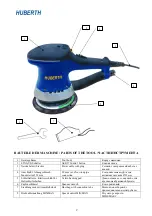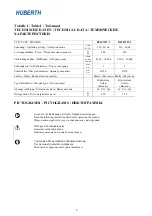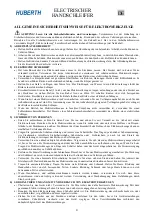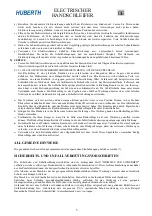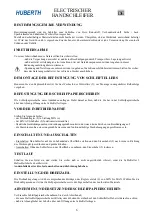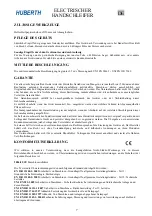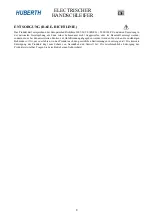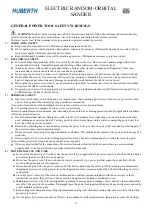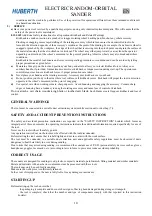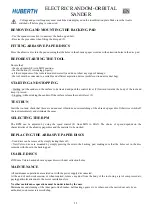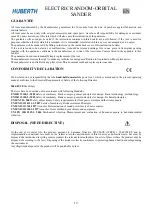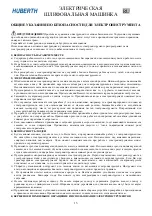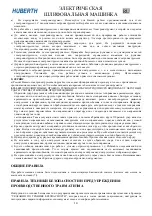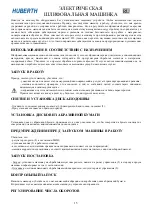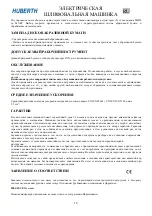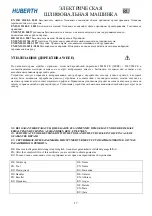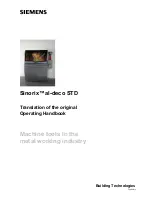
ELECTRIC RANDOM-ORBITAL
SANDER
EN
11
- Voltage and power frequency must match the data displayed on the identification plate. Make sure that tool is
switched off before plug is connected.
REMOVING AND MOUNTING THE BACKING PAD
- Use the spanner wrench (6) to unscrew the back-up pad bolt;
- Reverse the procedure when fitting the disc pad (5).
FITTING ABRASIVE PAPER DISCS
Press the abrasive disc into the pad ensuring that the holes in the abrasive paper coincide with extraction holes in the disc pad.
BEFORE STARTING THE TOOL
Ensure that:
- the speed control (8) is in MIN position;
- the start button (2) is working properly;
- all the components of the tool are mounted correctly and do not show any signs of damage;
- the tool must be connected to a suitable and efficient aspiration device (mobile suction unit or dust bag).
STARTING AND STOPPING
- Starting: put the sander on the surface to be treated and push the control lever (2) forward towards the body of the tool and
keep it pressed.
- Stopping: without taking the sander off the surface release the control lever (2)
TEST RUN
Start the tool and check that there are no unusual vibrations, no mismatching of the abrasive paper disc. Otherwise switch-off
the tool immediately and eliminate the cause.
SELECTING THE RPM
The RPM can be adjusted by using the speed control (8) from MIN to MAX. The choice of speed depends on the
characteristics of the abrasive paper disc and the material to be worked.
REPLACING THE ABRASIVE PAPER DISCS
- Used discs can be removed by simply tearing them off;
- New Velcro discs are mounted by simply pressing them into the backing pad, making sure that the holes cut in the disc
coincide with those in the backing pad.
USABLE DISCS
Ø150 mm Velcro backed abrasive paper discs with dust extraction holes.
MAINTENANCE
All maintenance operations are carried out with the power supply disconnected.
At the end of each work session, or when required, remove any dust from the body of the tool using a jet of compressed air,
paying particular attention to the motor ventilation slots.
No other maintenance operations must be undertaken by the user
.
Maintenance and cleaning of the inner parts, like brushes, ball bearings, gears etc. or others, must be carried out only by an
authorized customer-service workshop.


